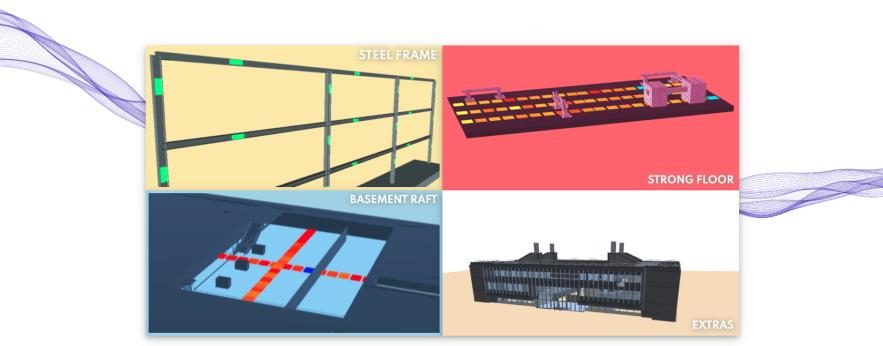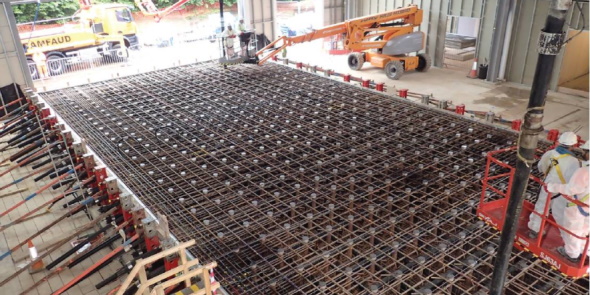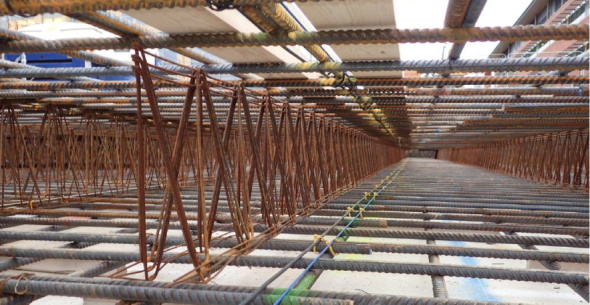
Creating a ‘living lab’
The work of CSIC over the past 10 years has made the case for understanding the actual performance of buildings and infrastructure assets in order to make better decisions for their efficient and sustainable design, construction, operation and maintenance.
This approach also offers societal and economic benefits in terms of environmental sustainability, energy savings, reduction of waste and user wellbeing. In this project, sensors and data analysis enable better asset management, while reducing carbon emissions and enhancing conditions for users.
In August 2019, CSIC moved office into the Civil Engineering Building on the West Cambridge campus, a new facility funded as part of a £138M UK government investment in infrastructure and cities research and host to the UKCRIC (UK Collaboratorium for Research on Infrastructure & Cities) National Research Facility for Infrastructure Sensing (NRFIS). Construction of the building presented an opportunity to apply CSIC’s monitoring expertise to its own HQ, to create a ‘living lab’. Six sensor packages were installed from the roof to the foundation, five of which were led by the CSIC research team and four of which were designed and installed by CSIC spin-out Epsimon Ltd. The building was also fitted with an energy/cost metric to minimise energy usage.
To read more about the smart features of the Civil Engineering Building see the NRFIS website here.
The strong floor instrumented with DFOS and FBG sensors being concreted ©Epsimon Ltd
Monitoring performance
Sensor systems bring what is perceived as a static and inanimate structure to life. The data collected can be used to help optimise a building’s operational use, improve its performance and enable asset owners to proactively plan modifications throughout its life cycle.
The data acquired from the sensors embedded in the Civil Engineering Building makes possible comparison between the design models and the actual performance, which can inform future projects in order to achieve a more cost-effective and sustainable construction process.
CSIC researchers have developed technologies to store, interpret and visualise data streams collected from the sensor packages.
Fibre optic sensor cables attached to the basement raft reinforcement ©Epsimon Ltd
Engaging with data visualisation
In July 2021, a virtual event which was part of the CSIC 10th anniversary celebrations, presented new developments to the Civil Engineering Building monitoring project. The presentation by Dr Miguel Bravo Haro demonstrated how smart infrastructure brings a building to life by engaging the audience with a new interactive platform that collects, analyses, and visualises rich streams of data coming from the sensors deployed across the building.
This new platform is now a permanent fixture for curious minds to learn more about the power of instrumented buildings through cutting edge tools for data analysis and visualisation. Since the official launch, the platform has received more than 11,000 hits and can be explored at: http://www.csiclivingbuilding.eng.cam.ac.uk/
•Watch a presentation featuring Dr Miguel Bravo Haro and Dr Nicky de Battista introducing the smart sensing of the Civil Engineering Building on the CSIC YouTube channel.
Read more:
-
‘Making sense. Monitoring and analysing whole-life performance of the new Civil Engineering Building at the University of Cambridge’, Civil Engineering Surveyor (CES), December 2020
-
‘Making sense – Civil Engineering Building instrumented with five sensor packages to support performance-based design’ - click here
CSIC team
Dr Nicky de Battista, Research Associate, Dr Cedric Kechavarzi, Operations Manager, Dr Miguel Bravo Haro, Research Associate, Dr John Orr, Investigator, and Paul Fidler, Computer Associate.


